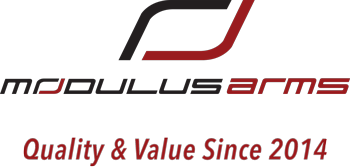Posted by Modulus Arms on 26th Jan 2015
ATF Clarifies Previous Ruling Regarding 80% Lower Receiver Manufacturing Processes
Legal Disclaimer: Please understand that we are not lawyers and the information in this blog article is not presented as legal advice nor should it be construed as such. The content of this article is strictly meant to inform and entertain. If you need legal advice please consult an attorney. Laws change constantly and we make no promises that the information below is or will remain accurate. To protect your freedom, you must do your own research.
ATF Ruling 2015-1 ; Dated January 2, 2015
General Synopsis:
"Held, any person (including any corporation or other legal entity) engaged in the business of performing machining, molding, casting, forging, printing (additive manufacturing) or other manufacturing process to create a firearm frame or receiver, or to make a frame or receiver suitable for use as part of a “weapon … which will or is designed to or may readily be converted to expel a projectile by the action of an explosive,” i.e., a “firearm,” must be licensed as a manufacturer under the GCA; identify (mark) any such firearm; and maintain required manufacturer’s records.
Held further, a business (including an association or society) may not avoid the manufacturing license, marking, and record keeping requirements of the GCA by allowing persons to perform manufacturing processes on blanks or incomplete firearms (including frames or receivers) using machinery, tools, or equipment under its dominion and control where that business controls access to, and use of, such machinery, tools, or equipment.
Held further, this ruling is limited to an interpretation of the requirements imposed on persons under the GCA, and does not interpret the requirements of the National Firearms Act, 26 U.S.C. 5801 et. seq."
Further Interpretation:
"Unlicensed individuals occasionally purchase castings or machined/molded or other manufactured bodies (sometimes referred to as “blanks,” or “80% receivers”) that have not yet reached a stage of manufacture in which they are classified as “firearm frames or receivers” under the Gun Control Act of 1968 (GCA) and implementing regulations. Once purchased, these individuals may perform minor drilling and machining activities in or on the fire control area or other critical areas of the castings or machined/molded bodies sufficient to create a “firearm frame or receiver” under the law.
An FFL or unlicensed machine shop may also desire to make available its machinery (e.g., a computer numeric control or “CNC”machine), tools, or equipment to individuals who bring in raw materials, blanks, unfinished frames or receivers and/or other firearm parts for the purpose of creating operable firearms. Under the instruction or supervision of the FFL or unlicensed machine shop, the customers would initiate and/or manipulate the machinery, tools, or equipment to complete the frame or receiver, or entire weapon. The FFL or unlicensed machine shop would typically charge a fee for such activity, or receive some other form of compensation or benefit. This activity may occur either at a fixed premises, such as a machine shop, or a temporary location, such as a gun show or event.
A business (including an association or society) may not avoid the manufacturing license, marking, and recordkeeping requirements under the GCA simply by allowing individuals to initiate or manipulate a CNC machine, or to use machinery, tools, or equipment under its dominion or control to perform manufacturing processes on blanks, unfinished frames or receivers, or incomplete weapons."
View and download full document here: ATF Ruling 2015-1 Maufacturing and Gunsmithing

